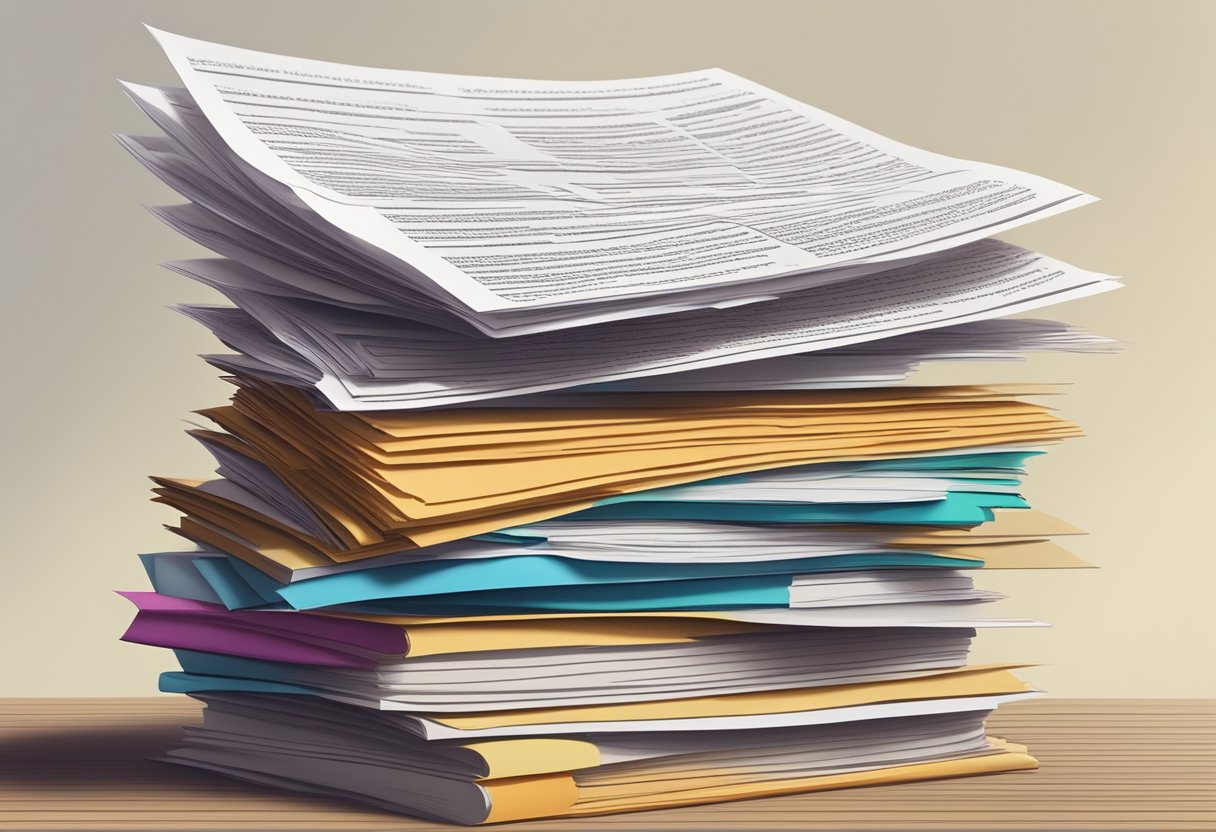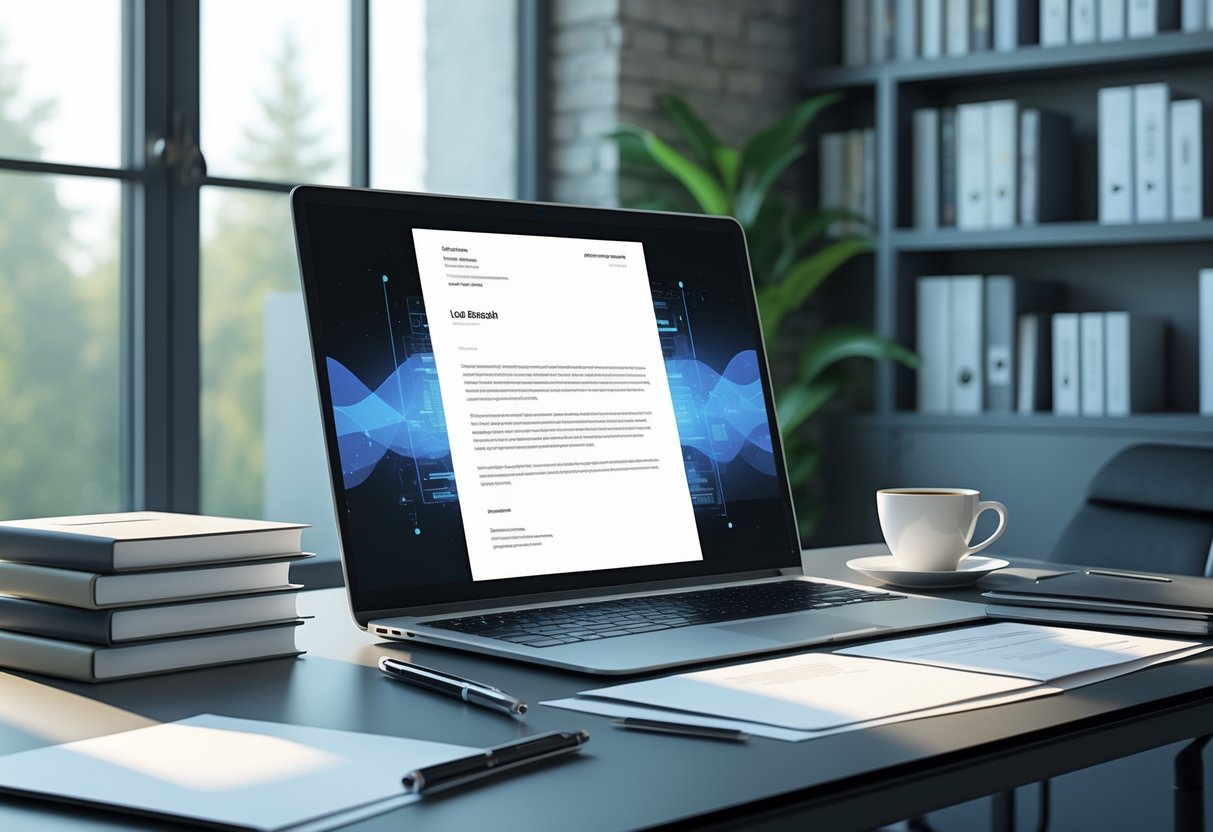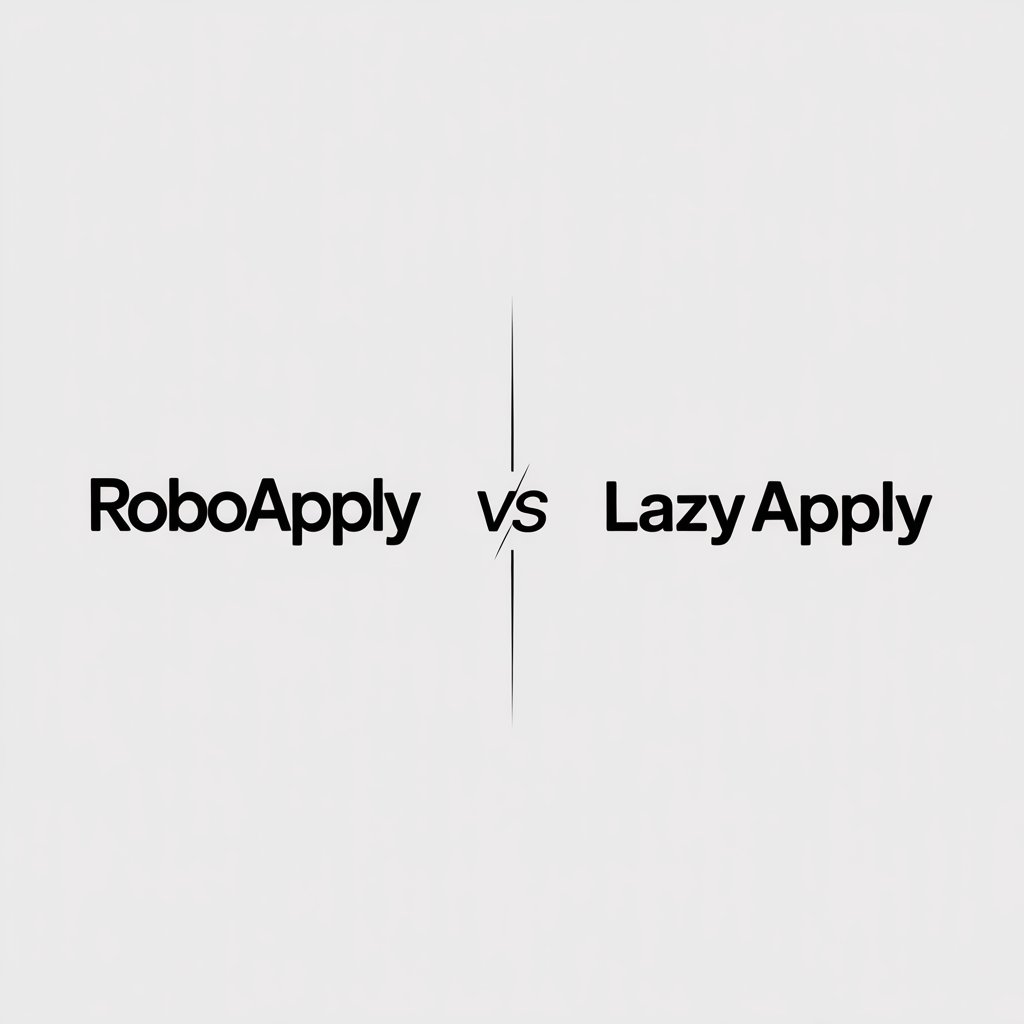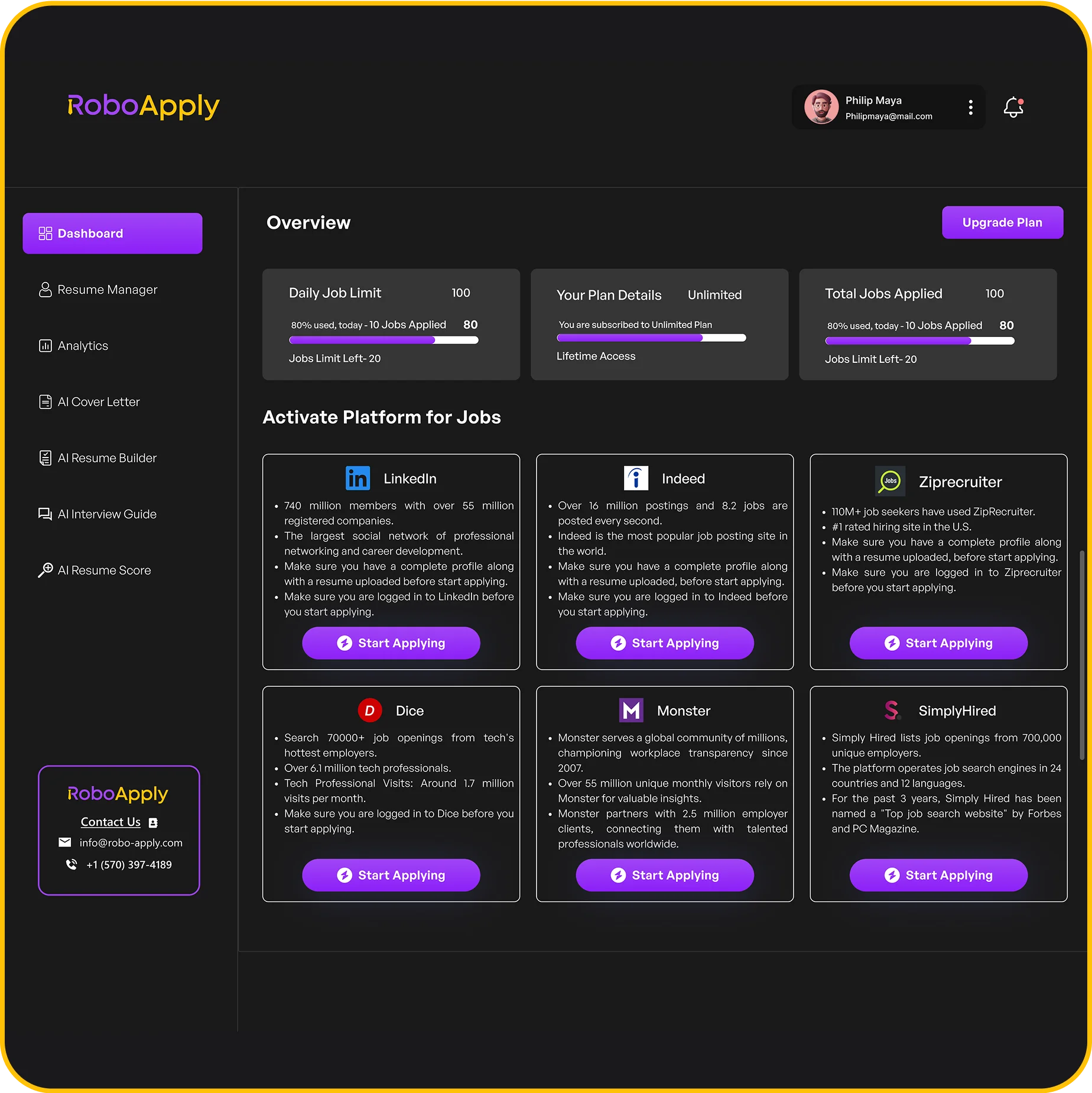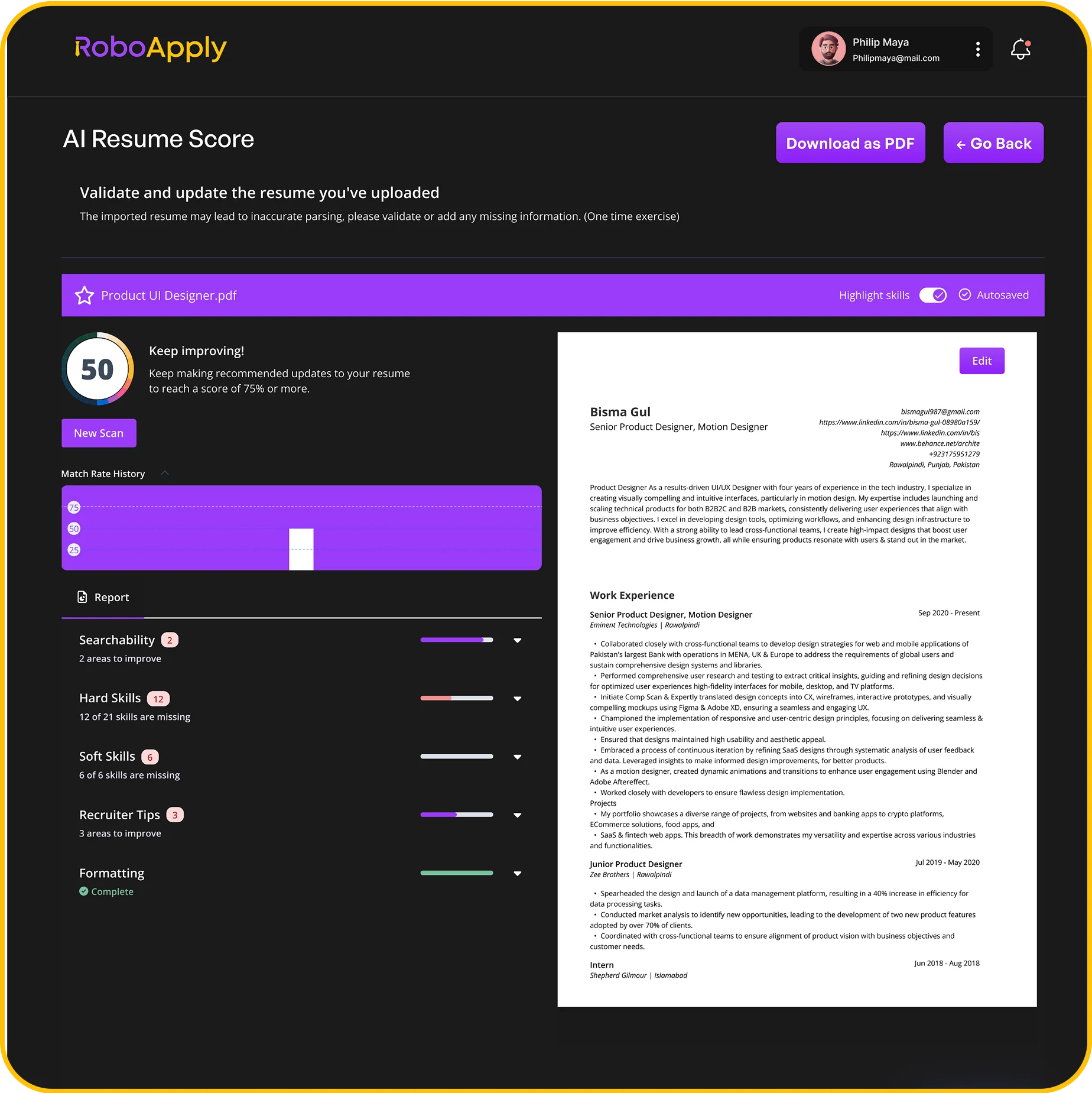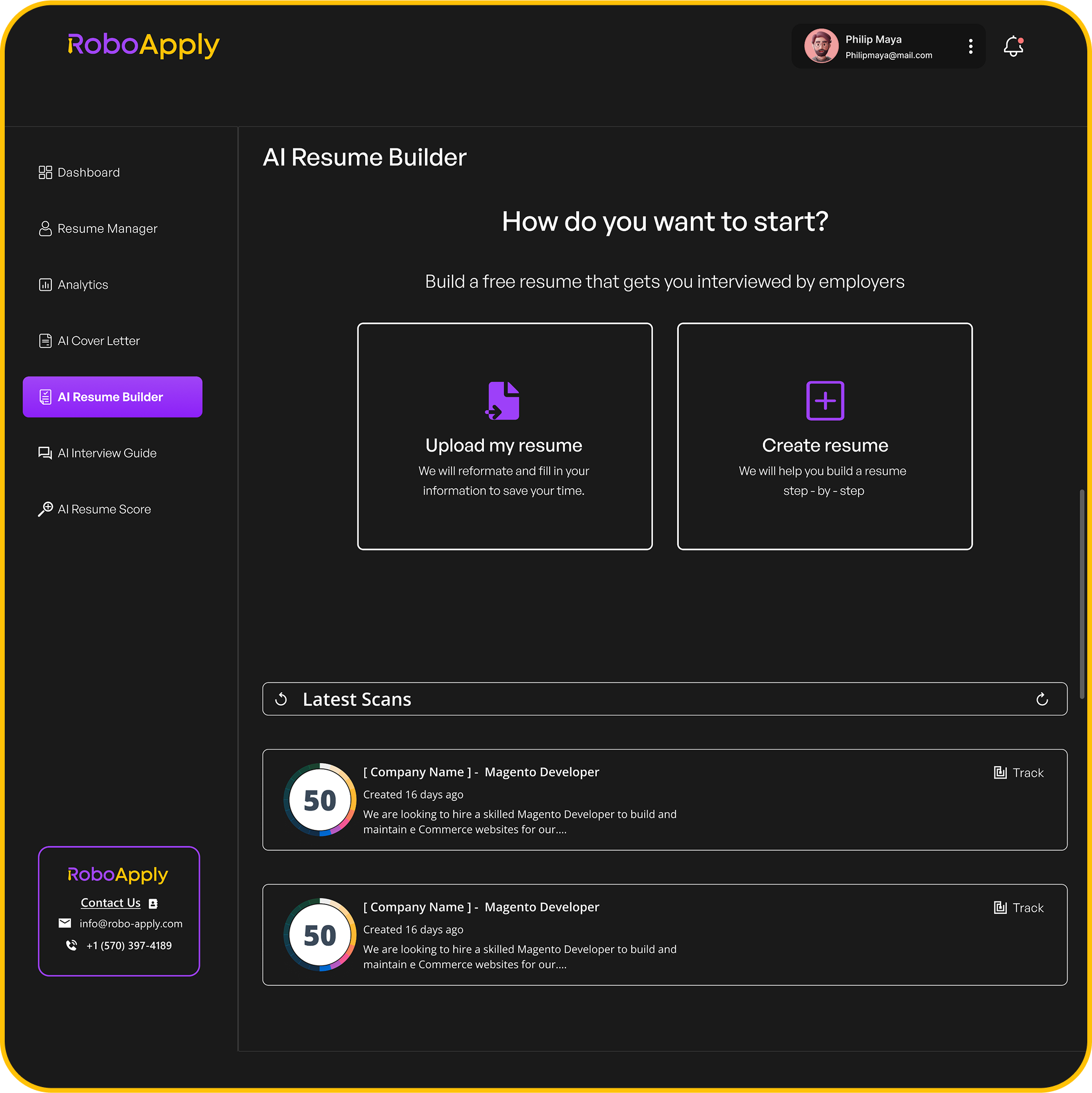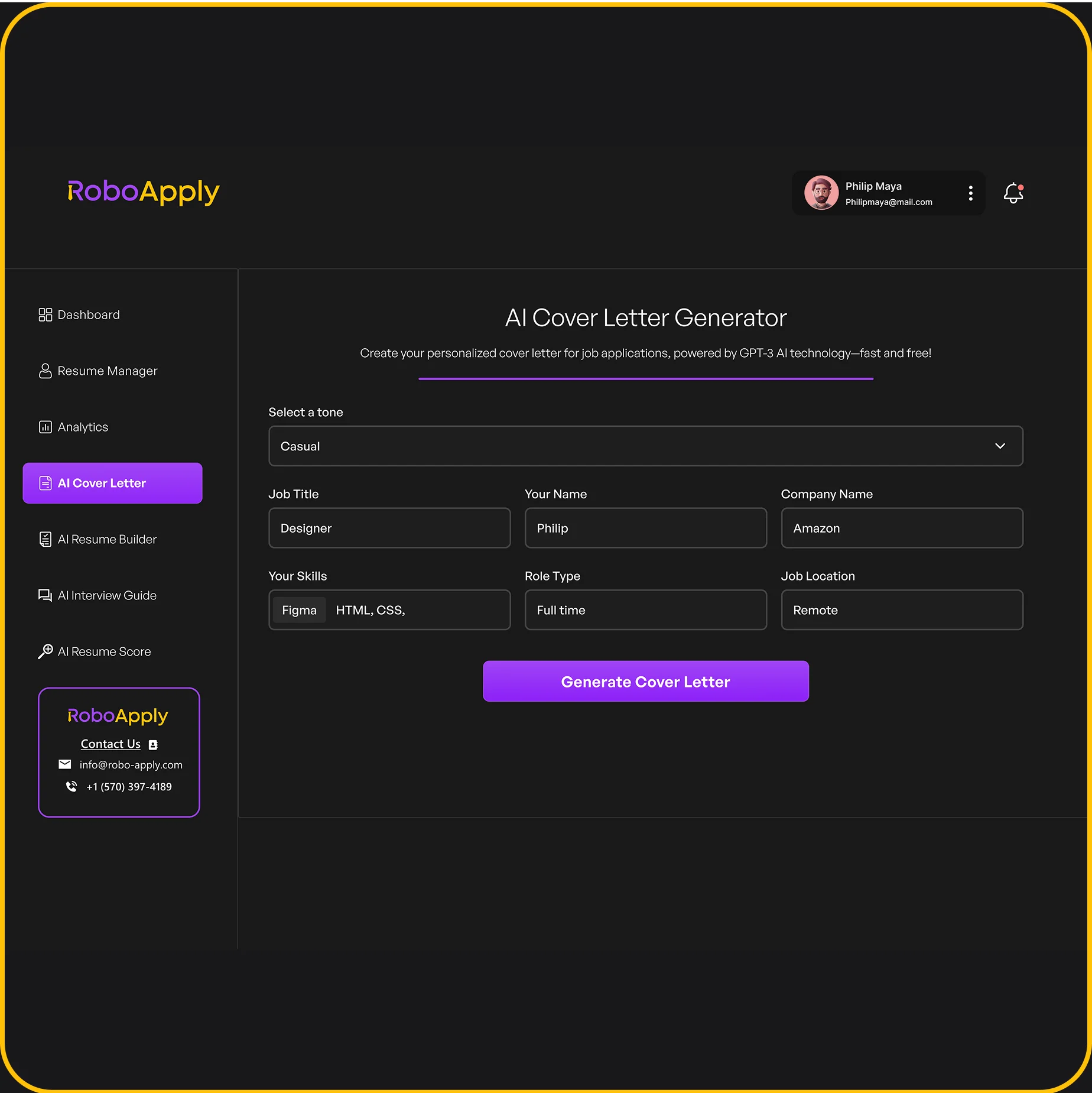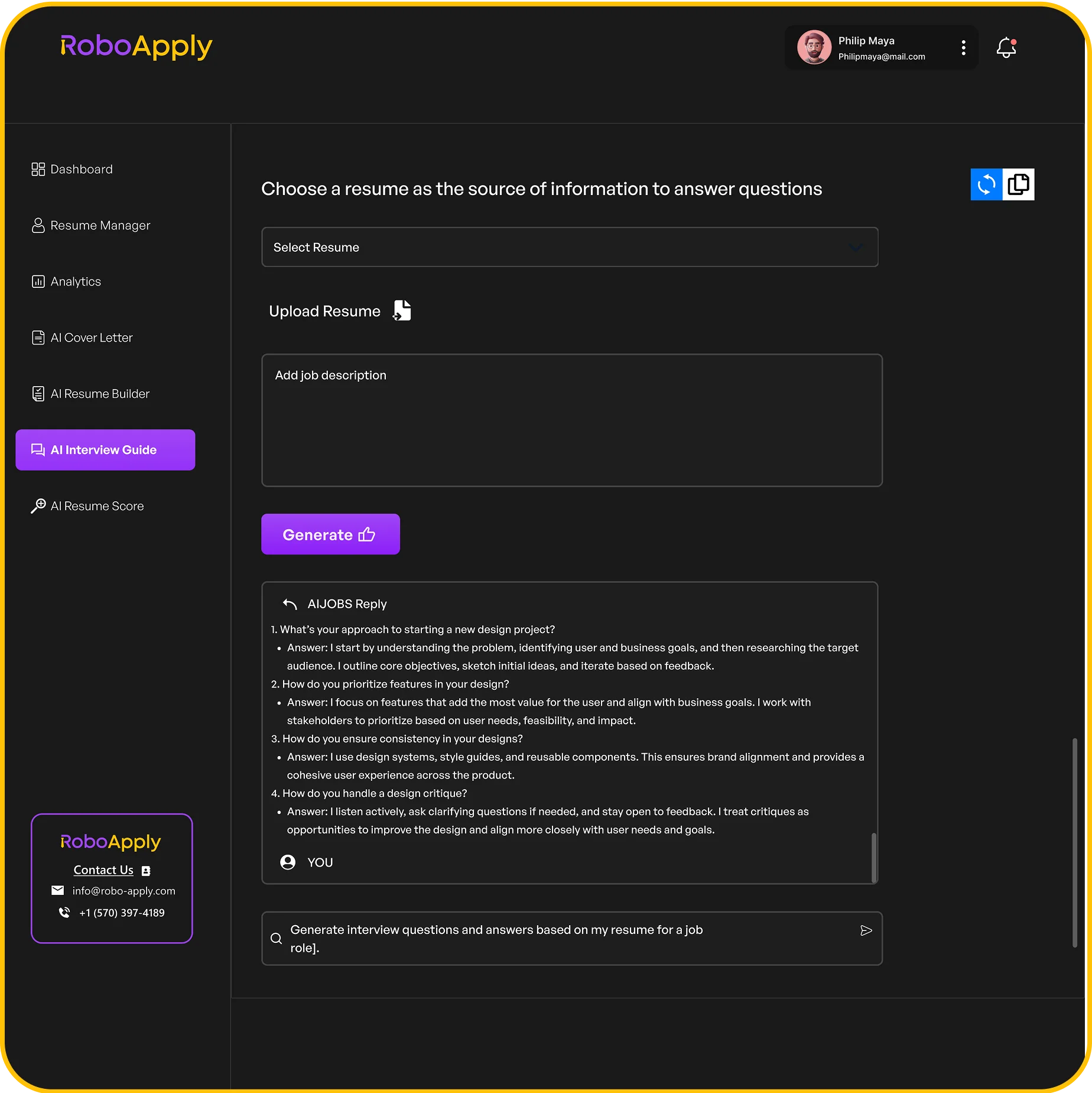So, you’re staring at a blank page, wondering—how long is this motivation letter supposed to be? Some folks get carried away and write a mini-novel, others stop at a paragraph and call it a day. The truth? A motivation letter should almost always be one page long, unless the school or employer says otherwise. That’s just enough space to keep things readable and show you know how to get to the point.

A single page gives you room to explain your goals and make your case without wandering off or sounding like a broken record. Most experts and universities agree: clear, focused writing is way more impressive than a rambling essay—Novoresume and others have said as much.
If you keep your letter tight, you’re more likely to leave a good impression (and avoid boring your reader to tears). Throughout this article, I’ll share how to organize your thoughts, pick what matters, and dodge some common mistakes.
Key Takeaways
- Stick to one page for motivation letters, unless there’s a different instruction.
- Prioritize clear structure and what’s actually relevant.
- Skip unnecessary details or repeating yourself.
Ideal Length of a Motivation Letter
A motivation letter needs to be long enough to show what you’ve accomplished and what you want, but not so long that the reader tunes out halfway through. Keeping things concise is usually the way to go if you want admissions folks to spot why you’re a strong applicant right away.
Standard Word and Page Counts
Most motivation letters hit the sweet spot when they’re kept to a single page. You’re generally looking at 250 to 500 words—that’s what most people expect. If you stay within that range, you show you respect the reader’s time (and honestly, who doesn’t appreciate that?).
You’ll see a lot of advice about avoiding letters that are too short or too long. Realistically, 300-400 words is usually enough to cover all your important points without rambling.
Here’s a quick table for reference:
| Length | Appropriate? |
|---|---|
| Under 200 words | Too short, not enough detail |
| 250-500 words | Just right for most applications |
| Over 500 words | Attention starts to drift |
Letters that follow these guidelines tend to stand out and look more professional. Plenty of folks on Reddit and LinkedIn back this up too.
Recommended Guidelines by Universities
Most universities spell out what they want: one page, about 400 words, standard formatting. Sometimes there’s a specific word count in the application portal, so it’s worth double-checking.
If you don’t see a limit, just play it safe—one page, clear font, normal margins, regular line spacing. Anything longer can start to look unfocused, and honestly, admissions committees don’t have time for that.
If you’re unsure, check the university’s website or their FAQ section. Following their advice shows you pay attention, and that’s always a plus.
How Length Impacts Reader’s Attention
Let’s be real: admissions committees read a mountain of applications. They want letters that are short, skimmable, and get to the point.
If your letter is too long, it can feel all over the place. The key stuff gets lost, and you risk sounding repetitive. Too short? It might look like you didn’t put in much effort or just didn’t have much to say.
Stick to the ideal length, and your motivations and achievements will actually stand out. It’s about making every sentence count, so you’re remembered for the right reasons.
Factors That Influence Motivation Letter Length
A few things can affect how long your motivation letter should be. You’ve got to follow the instructions (obviously), but also think about the type of program or job, and how much detail makes sense for your experience.
Application Requirements
Schools, employers, and organizations usually have their own rules about letter length. That might mean word limits, page counts, or even specific formatting.
Honestly, ignoring these is a bad look. Not following instructions could get your application tossed out before anyone even reads it. For example, lots of universities and scholarships want a one-page letter—usually 250 to 400 words. Same goes for jobs and internships.
Quick reminders:
- Double-check all the application instructions. Don’t skip this step.
- Never go over the limit.
- If there’s no rule, stick to one page.
Type of Opportunity or Program
Why you’re writing matters. A bachelor’s application might need a different approach than a master’s, a job, or even a volunteering gig.
Academic programs usually want to know how your experience and future plans fit their course. If you’re going for a research or advanced program, you might need a bit more space to explain your background.
For jobs or volunteering, it depends. Super competitive roles or scholarships might want more detail about your qualifications and motivation. Simpler opportunities? Keep it short and punchy.
Level of Experience and Qualifications
If you’ve got a long list of professional experience or qualifications, you’ll probably need a bit more space to tell your story. Still, don’t just repeat your resume.
New to the field or applying for entry-level stuff? You can write a shorter letter—just focus on your motivation, goals, and any standout achievements. More experienced folks should highlight the most relevant roles and link them to what you’re applying for.
A few tips:
- Only mention the experience and skills that matter for this application.
- Keep things tidy—short sections or bullet points help.
- Always connect your past to what you want to do next.
Structuring an Effective Motivation Letter
A motivation letter that’s actually well-structured can really show off your skills and goals (and your enthusiasm—don’t forget that). Each part—intro, body, conclusion—has its job, and together they make your case.
Purpose of the Introduction
The intro sets the mood. It should give a quick snapshot of who you are and what you’re applying for. Let the reader know why you’re writing, right away.
What to include:
- Your name and a bit about your background
- The exact job, program, or opportunity
- A clear statement of intent—why this, why now
A strong introduction grabs attention, but keeps it professional. Don’t start with a long-winded story or wander off-topic. Clarity wins every time. If you want more ideas, check this guide on writing motivation letters.
Organizing Your Body Paragraphs
The body is where you explain why you’re a good fit. Each paragraph should tackle something different—education, work, skills, future plans.
A little structure goes a long way:
- Start paragraphs with a clear topic sentence
- Try bullet points or short lists for achievements or strengths
- Always tie your experience back to what they need
Don’t just copy your resume. Instead, connect your background to the opportunity. Be concise. Most advice says to keep your language straightforward—this practical guide has some good tips.
Writing a Memorable Conclusion
The conclusion wraps things up and reminds the reader why you’re a good pick. Restate your interest and main points, but don’t just repeat yourself.
A solid conclusion should have:
- A quick summary of your motivation or goals
- A thank you for their time
- A polite call to action—like saying you’d love to discuss things further
Keep it short and professional, but don’t be afraid to sound like a real person. Too much enthusiasm can come off as desperate, but a little confidence never hurts. For more on tone and formatting, this motivation letter writing guide is worth a look.
Balancing Content and Conciseness
You want your motivation letter to show off your strengths, but you don’t want to drown the reader in details. The trick is staying focused—let them see right away why you’re a great fit.
Highlighting Key Qualifications
Start strong. Put your most important qualifications up front so the reader knows what you bring to the table.
One way to do it: make a short list or group your top skills. For example:
- Education: Degrees, honors
- Certifications: Licenses, certificates
- Strengths: Leadership, problem-solving, whatever fits
Stick to straightforward facts instead of fancy language. Show how your skills match what the school or company needs.
And don’t forget to mention your professional goals. A clear sense of direction helps the reader see how you’d fit in—and maybe even where you could go next.
Including Relevant Experience
Picking the right experiences that actually connect to the job or program is key. Don’t just toss in everything—choose a couple of situations where you genuinely showed strong performance or real enthusiasm.
Try to give specific examples, like:
- Finishing a major project
- Volunteering with a group that’s relevant
- Leading a team or untangling a tricky problem
Numbers help, too. If you can say “raised funds by 20%” or “managed a team of five,” it’s way more convincing. This kind of detail pops off the page and makes you memorable. As for length, a motivation letter usually lands somewhere between 250 and 500 words. That’s enough space to make your point without rambling.
Don’t just rattle off every task you’ve ever done. Focus on the outcomes—the stuff that proves you’re right for the new position.
Avoiding Repetition and Filler
Honestly, shorter is almost always better. If a detail doesn’t add something new, it’s just taking up space. Saying the same thing twice (or three times) is a fast way to lose your reader.
Every point should earn its keep. If a sentence isn’t showing a new achievement or skill, skip it.
Some phrases just don’t help:
- “I am very passionate…”
- “I would like to take this opportunity…”
- Listing traits with nothing to back them up
Instead, go for short, direct sentences. Real examples are your friend. This makes what you’re saying much clearer and lets your actual enthusiasm come through. Keeping things focused just makes you look more professional.
Formatting and Layout Considerations
Solid formatting isn’t just about looks—it actually makes your motivation letter easier to read. Even basic layout stuff, like your font or margin size, says a lot about your attention to detail. Don’t underestimate how much this can help you stand out.
Font and Margins
Stick with a clean, readable font. Arial, Calibri, Helvetica—any of those work. Font size? 10 to 12 points is pretty much perfect. Too small is hard to read, too big looks childish.
Margins matter more than you might think. At least 1 inch on every side is a safe bet. It keeps things tidy and prevents your letter from looking crammed. White space makes it easier for decision-makers to skim, especially if your letter is part of a big pile.
Best to skip colors, graphics, or weird fonts. Classic and simple font style and size will always look more professional. If you’re sending a PDF, your formatting should stay put. If it’s a Word doc or something else editable, double-check your spacing and alignment—things can get weird between computers.
Contact Information and Signature
Put your contact info at the top: name, address, phone, email. Usually left-aligned, sometimes up in the header, or just above the greeting. The date goes right below that—pretty standard.
After your closing (“Sincerely,” or whatever you prefer), leave a bit of space for a signature if you’re printing and mailing. If it’s all electronic, just type your full name. Some folks add a scanned signature for a personal touch, but it’s not a must-have.
Getting the basics like contact info and signature in the right spot just shows you know how formal communication works—and it makes it easier for someone to reach you.
Consistency with Cover Letters and CVs
Try to match the formatting style of your motivation letter to your cover letter and CV or resume. Same fonts, font sizes, margins—the works. Consistency just looks sharp.
If you’re applying for tech or business roles, even the file naming matters. For example, LastName_MotivationLetter.pdf lines up with LastName_CV.pdf and LastName_CoverLetter.pdf. If you use bullet points, headings, or tables in one doc, echo that style in the others.
Your motivation letter should feel like it belongs with your other documents—a unified, polished set. Templates or house styles can help keep everything cohesive. For more on cover letter formatting, check out these tips.
Common Mistakes to Avoid When Determining Length
Getting the length right isn’t just about following rules—it’s about making sure every bit of your letter helps your case. Sidestepping the usual mistakes can help you make a much stronger impression, which is what you want if you’re hoping for that interview.
Exceeding Application Guidelines
Writing more than you’re asked for is a classic blunder. Most places want a motivation letter that’s no longer than a page—about 500 words tops. You’ll see in popular motivation letter examples that this is pretty much the norm, unless they say otherwise.
Long-winded letters come off as unfocused and make it tough for the reader to spot your best points. Not sticking to the guidelines can also make you look careless or like you’re not respecting the process.
A tight, clear letter proves you know how to communicate. Always double-check the word or page limits before you start, and don’t be afraid to trim if you go over.
Omitting Essential Information
But don’t cut so much that you leave out key details. You still need to say why you’re interested, how your background fits, and what you hope to get out of the program. If you skip this stuff, your application just won’t land.
A solid letter covers all the essentials without padding. Make sure you hit your reasons for applying, your relevant skills, and your future goals—examples like these can help you see how it’s done.
Using a checklist or jotting down bullet points as you draft can help you avoid leaving out anything crucial. Everything you include should actually help the reader understand you better—especially if this letter is what gets you an interview.
Overemphasizing Personal Achievements
It’s tempting to go on about your achievements, but overdoing it can backfire. Listing every award or past success turns your letter into a resume, which isn’t the point here.
What readers want is to see how your achievements connect to your goals and why you’re drawn to this opportunity. When you write, tie your main accomplishments to what the program is looking for—keep the spotlight on your motivation.
Share stories and experiences that show why this program is the right fit. That way, your letter stays balanced and relevant, and you’re more likely to move forward in the process.
Maximizing Impact Within the Recommended Length
A motivation letter doesn’t need to be long—just make each word count. The best ones connect your personal wins to your future plans, showing why you’re a good fit.
Capturing the Committee’s Interest
Committees see a ton of letters, so you’ve got to grab their attention. Right from the first paragraph, give a real reason for your interest in the field or program. Honest, specific statements about what sparked your interest work best.
Examples help. Maybe you won a science competition or led a community project—those details show passion and real action. Avoid empty praise or generic statements about the school.
Keep sentences short and straight to the point. Each one should add something new. Lists—like major milestones, awards, or relevant experiences—make your strengths pop.
Example List:
- Completed summer internship at a research lab
- Led a school club related to the program
- Volunteered in a related community initiative
Highlighting what makes your journey unique shows you’re dedicated.
Linking Goals to the Program
Draw a clear line between your future goals and what the program offers. Mention specific courses, professors, or experiences that make the fit obvious.
Say what you actually want to learn. If you’re aiming for a career in environmental policy, point out the program’s environmental law classes.
Table: Example Goals and Program Matches
| Future Goal | Program Feature to Mention |
|---|---|
| Become a researcher | Advanced lab facilities |
| Work in social policy | Courses on public policy analysis |
| Enter medical field | Partnerships with local hospitals |
Making these connections shows you’ve thought about your path and you’re serious about it.
Demonstrating Understanding of the Institution
Show you know what’s special about the institution—not just sending the same letter everywhere. Drop in specific values, teaching styles, or unique activities that set the place apart.
If the school is big on hands-on projects, talk about your excitement to get involved. If there are student groups in your field, mention them.
Concrete examples prove you’ve done your homework and you’re genuinely interested. A quick list of what attracts you to the school can drive the point home:
- Teamwork focus in courses
- Student-run research groups
- Programs linking students with local industry
Recognizing what makes the institution unique shows you’re thoughtful and motivated.
Frequently Asked Questions
A motivation letter should be clear and focused, and it needs to hit the specific requirements for the program or job. The right length, structure, and main points depend on what you’re applying for.
What is the ideal length for a motivation letter when applying for a job?
Usually, one page does the trick. Most recruiters expect something in the 250–400 word range. Short, direct, and easy to read is best. For more, see this guide on cover letter length.
How many pages should a motivation letter for a university application typically be?
One page, generally. Some schools might accept up to a page and a half, but shorter is almost always better. Always check the instructions. More info here: motivation letter length for universities.
What should be the structure and paragraph count of an effective motivation letter for an internship?
Three to four paragraphs is a good target. Start with a short intro, then one or two body paragraphs about your interest and skills, and wrap up with a brief closing.
Are two-page motivation letters acceptable for graduate program applications?
Generally, no. Most grad programs want a letter that’s no more than a page. Some might allow up to a page and a half, but two pages is pushing it unless they specifically ask for it. Always follow the instructions. There’s a discussion on length limits if you’re curious.
What essential elements must be included in a motivation letter for PhD admissions?
You’ll need an intro, clear academic interests, relevant experience, your research goals, and a solid reason for picking that program. Make sure you show how your goals line up with the department or advisor.
What are common mistakes to avoid when crafting a motivation letter for the Erasmus program?
People tend to get a bit too broad or generic—almost like they’re writing for any program, not Erasmus specifically. Another thing? Some folks just copy and paste from their CV, which honestly, doesn’t add much. It’s better to dig into details that actually matter for Erasmus. Oh, and the format—sometimes that’s overlooked, but it’s more important than you’d think. If you keep things focused and personal, your letter’s way more likely to stand out.



